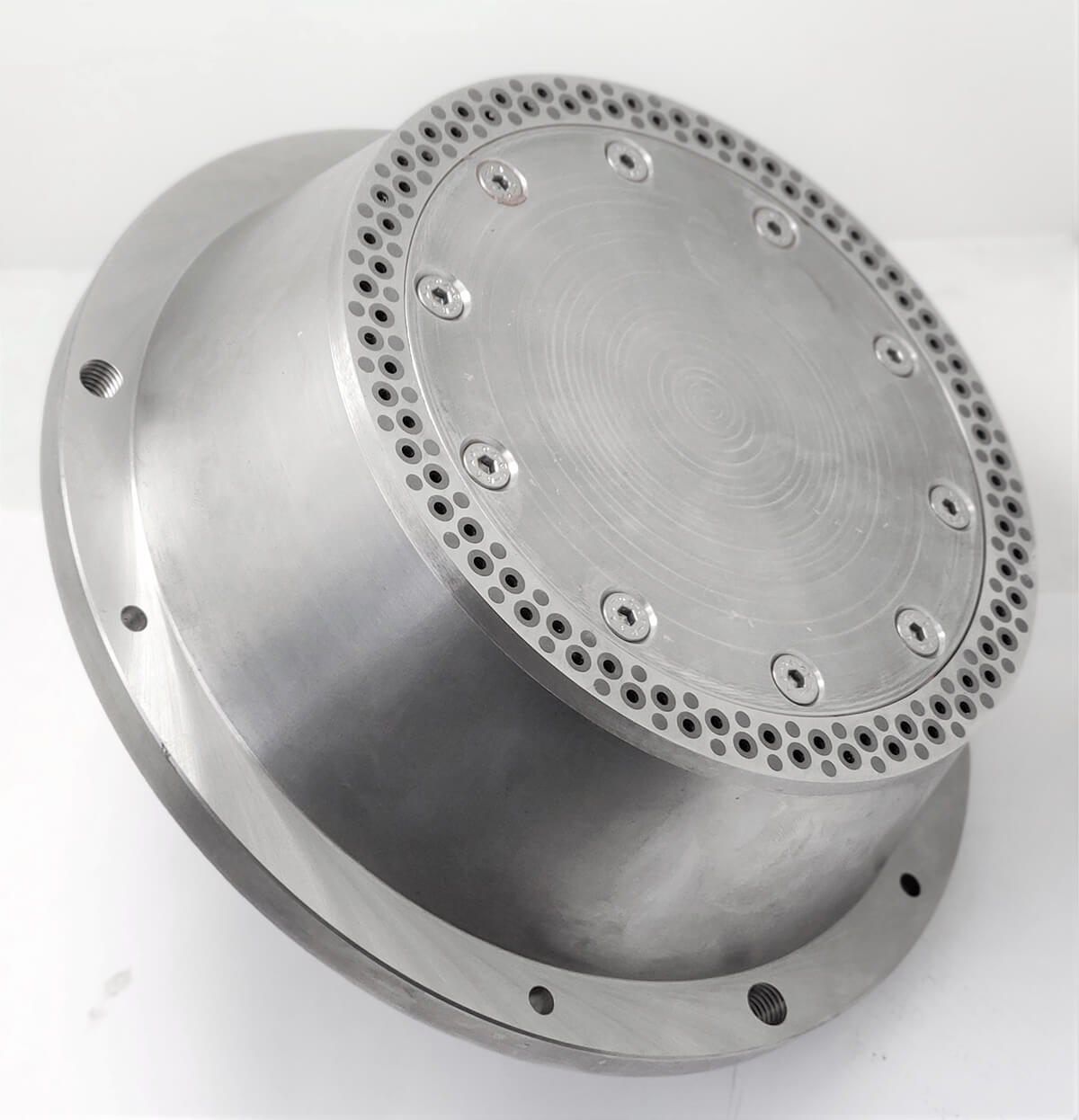Blog: Innovations & Insights

December 2024
The Role of Pelletizer Dies in Underwater Pelletizing: Boosting Quality and Productivity
Underwater pelletizing is a cornerstone technology in the field of polymer processing: processing plastic pellets of high quality. At the heart of this sophisticated process lies a critical component that often deserves more attention: the pelletizer die. In working in conjunction with pelletizer knives and blades, these dies are critical to achieving both the quality of final pellet along with the final pellet efficiency of production. The importance of knowing how pelletizer dies contribute to your production process is incredibly important as the demands from industries friendly to quality standards and the speed of production grows. Let’s learn the role of pelletizer dies in underwater palletizing.
The Foundation of Underwater Pelletizing
Pelletizer dies represent the cornerstone of underwater pelletizing systems, featuring precisely engineered holes through which molten polymer is extruded before being cut by rotating pelletizer knives. These dies aren’t merely passive components; they’re precision-engineered marvels that must withstand extreme conditions while maintaining exacting standards. The die plate, complete with its carefully designed hole pattern, works in perfect synchronization with pelletizer blades to create uniform, high-quality pellets. The success of the entire pelletizing operation depends heavily on the quality and precision of these dies.
Critical Design Elements
The geometry of die holes plays a crucial role in the pelletizing process. Modern pelletizer dies feature sophisticated hole patterns that ensure consistent polymer flow and uniform pellet size while minimizing pressure drop and material degradation. Advanced surface treatments and coatings further enhance die performance, providing superior wear resistance and improved polymer flow characteristics. These treatments significantly reduce polymer adhesion to die surfaces, ultimately extending the die’s service life. The positioning and arrangement of holes also affect the cutting efficiency of pelletizer knives, making precise engineering essential for optimal performance.
Temperature Management and Control
Temperature management across the die plate stands as a critical factor in successful pelletizing operations. Precise temperature control ensures consistent polymer viscosity, prevents premature solidification, and creates optimal conditions for the pelletizer knives to perform their cutting action. Modern pelletizer dies incorporate sophisticated heating systems and temperature monitoring devices to maintain ideal operating conditions. This precise temperature control not only affects pellet quality but also impacts the longevity of both dies and pelletizer blades, making it a crucial aspect of the entire system’s efficiency.
The Crucial Synergy: Dies and Knives
The relationship between pelletizer dies and knives represent a fundamental synergy in underwater pelletizing. Precise alignment of pelletizer blades relative to the die face, coupled with optimal cutting angles, ensures clean pellet formation. This precision engineering minimizes the gap between die and knives, resulting in consistently sized pellets. The synchronization of rotation speed with polymer flow rate creates a harmonious cutting action that reduces wear on both dies and pelletizer blades. Understanding and maintaining this delicate balance is crucial for achieving optimal performance and extending component life.
Impact on Production Quality
In modern underwater pelletizing systems, the impact of well-designed dies extends far beyond basic functionality. Enhanced pellet uniformity, improved production rates, and reduced waste are direct benefits of proper die selection and maintenance. These advantages translate into tangible operational benefits, including lower energy consumption, reduced maintenance requirements, and increased throughput. The quality of the die directly influences the consistency of pellet size and shape, which in turn affects the processability and final properties of the manufactured products.
Technological Advancements
The evolution of die technology continues to push the boundaries of what’s possible in underwater pelletizing. Smart features, such as integrated temperature sensors and real-time monitoring capabilities, are becoming increasingly common. Advanced metallurgy and coating technologies have extended die life while improving thermal management and resistance to corrosive materials. Modern pelletizer dies also incorporate innovative designs that optimize polymer flow and reduce pressure requirements, resulting in more efficient operations and better-quality pellets. These technological advances have transformed pelletizer dies from simple mechanical components into sophisticated precision instruments.
Maintenance and Optimization
For processors looking to optimize their underwater pelletizing operations, understanding the relationship between dies and pelletizer knives is crucial. Regular maintenance, including timely inspection of die holes and replacement of worn pelletizer blades, ensures consistent performance and longevity. Proper cleaning procedures and preventive maintenance scheduling help maintain optimal operating conditions and prevent unexpected downtime. Implementing a comprehensive maintenance program that includes regular die inspection, cleaning, and reconditioning can significantly extend die life and maintain optimal performance levels.
Future Outlook
The future of underwater pelletizing looks promising, with continuous innovations in die technology leading the way. As manufacturers face increasing demands for higher quality and productivity, the role of precisely engineered pelletizer dies, working in harmony with advanced pelletizer knives and blades, will become even more critical in meeting these challenges head-on. Emerging technologies in materials science and manufacturing processes continue to improve die design and performance, while integration with Industry 4.0 technologies promises enhanced control and monitoring capabilities. These advancements will further cement the crucial role of pelletizer dies in shaping the future of polymer processing.
